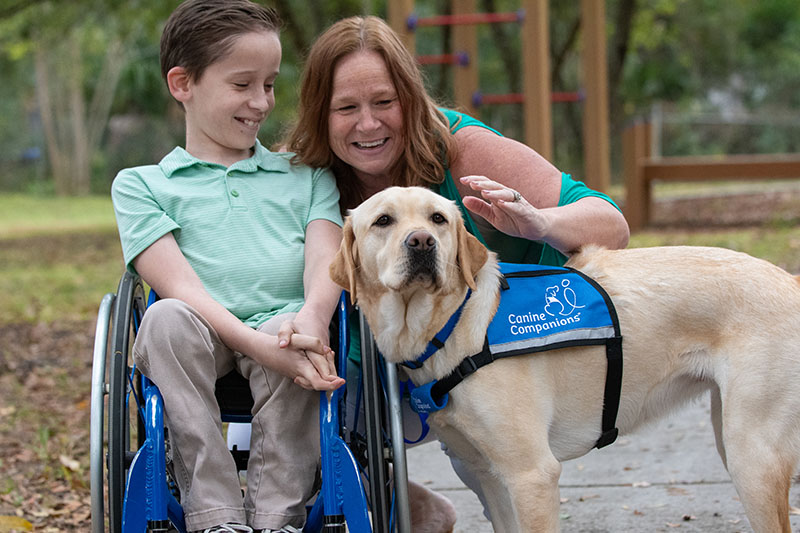Home » Service Dogs » National Service Dog Month » What is a Service Dog?
What is a Service Dog?
Canine Companions created the concept of service dogs to assist people with physical disabilities nearly 50 years ago. Today, there are many kinds of service dogs to perform tasks to help make life easier for people with disabilities. Canine Companions service dogs work with people with physical disabilities, deafness, cognitive disabilities and military-related post-traumatic stress disorder (PTSD).
With the help of their task trained service dogs, people with disabilities have increased independence, peace of mind and confidence.
15,000 Total
accredited service dogs working in North America
45 Tasks
mastered by our dogs to enhance independence
7,600+ Service Dogs
placed by Canine Companions since 1975
2 Years
spent on socialization and training to be our service dog

What are the rules about service dogs?
There are federal laws that help guide businesses, employers and service dog users on their rights. The most common set of rules are from the Americans with Disabilities Act (ADA):
- The ADA is the law people are most likely to recognize because it includes accommodations for people with disabilities in public places. The ADA also sets behavioral guidelines that service dogs have to follow for their handler to bring the dog in public places like the grocery store, movie theater or doctor’s office.
A business can only ask two questions about a service dog:
- Is the dog a service dog required for a disability?
- What task or work is the dog trained to perform?
- A business can’t ask about a person’s disability or to see the task the dog is trained to perform. This is because many tasks can’t be demonstrated at-will. The ADA also protects the privacy of the handler, so asking about a person’s disability isn’t appropriate.
- If a service dog – or any dog – is behaving in an aggressive manner, a business can ask the handler to remove the dog and return without the dog present. If a service dog is not in control – pulling towards other customers, eating off the floor, jumping, etc. – the handler has the right to fix the behavior before being asked to remove the dog from the business.

